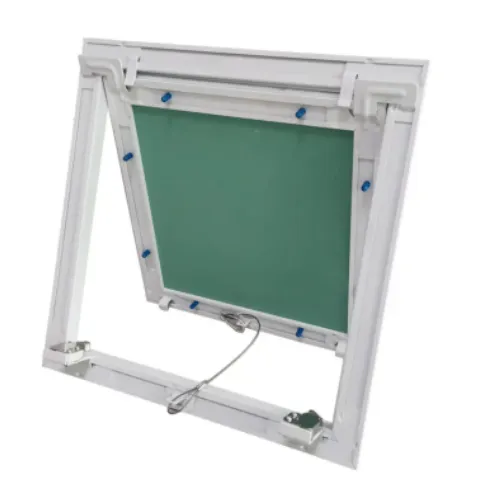Dec . 01, 2024 14:25 Back to list
Designing a Ceiling Access Panel for Easy Maintenance and Accessibility
The Importance of Access Panels on Ceilings
Access panels are essential features in modern construction and renovation projects, specifically designed to provide convenient entry points to concealed areas such as ceilings, walls, and floors. These panels are strategically installed to give maintenance personnel easy access to systems like electrical wiring, plumbing, and HVAC (heating, ventilation, and air conditioning). In this article, we will delve into the significance of access panels on ceilings, exploring their benefits, installation, and applications across different sectors.
Understanding Access Panels
Access panels, commonly made from materials such as metal, plastic, or gypsum board, serve as removable sections that allow for entry into spaces that are not ordinarily accessible. When installed on ceilings, they enable maintenance workers to reach vital infrastructure without causing significant damage or disruption to the surrounding areas. This functionality is particularly valued in commercial and residential properties, where aesthetics and functionality must coexist.
Benefits of Installing Access Panels on Ceilings
1. Ease of Maintenance One of the primary advantages of access panels is that they facilitate quick and easy maintenance of building systems. For instance, HVAC systems require regular checks and servicing; access panels allow technicians to reach ducts and equipment efficiently, minimizing downtime and preventing costly repairs.
2. Protection of Infrastructure By using access panels, property owners can protect their infrastructure from extensive damage. Instead of cutting through drywall or ceilings, access panels provide an organized way to reach mechanical components. This not only preserves the aesthetic quality of a space but also reduces the labor costs typically associated with repairs.
3. Space Efficiency For buildings with limited space, access panels are a practical solution. They allow for vertical access to systems that may be located in attics or above ceilings, enabling optimal use of available square footage without compromising accessibility.
4. Design Versatility Modern access panels come in various styles and finishes, allowing them to blend seamlessly into a building’s design. Whether it’s a restaurant, office, or residential home, these panels can be customized to achieve an unobtrusive appearance.
Installation Considerations
The installation of access panels requires careful planning and execution. Key factors to consider include
access panel on ceiling

- Location The panel should be placed in strategic areas where access is most frequently required. This location should ideally be out of plain sight to maintain aesthetic appeal while remaining readily accessible. - Sizing Choosing the right size is crucial. The panel must be large enough to allow easy access to the systems it covers while not being so large that it becomes unsightly or burdensome.
- Type of Panel Depending on the specific needs of the building, different types of access panels may be required. Some are designed for specific applications, such as drywall access panels for seamless integration into ceiling installations or insulated panels for energy efficiency.
Applications of Ceiling Access Panels
Access panels are utilized in a variety of settings
1. Commercial Buildings In office spaces and retail locations, access panels are often installed to facilitate maintenance of lighting fixtures, air conditioning units, and security systems.
2. Healthcare Facilities Hospitals and clinics heavily rely on access panels that provide entry to crucial utilities while allowing for the maintenance of sanitary conditions.
3. Residential Homes Homeowners benefit from access panels in attics or basements, enabling them to reach plumbing and ductwork without extensive demolition.
4. Educational Institutions Schools and universities use ceiling access panels for quick access to overhead systems in classrooms, laboratories, and auditoriums.
Conclusion
Access panels on ceilings are invaluable components of modern construction and building maintenance. They enhance accessibility, protect infrastructure, and maintain the aesthetic integrity of spaces. Given their versatility and benefits, integrating access panels into building designs is a smart choice for ensuring that essential systems can be maintained efficiently and effectively. Whether in commercial, residential, or institutional applications, the presence of access panels greatly contributes to the longevity and functionality of a property.
-
Quality Ceiling Trap Doors & Access Panels | Easy & Secure AccessNewsAug.30,2025
-
Durable Ceiling T Grid Systems | Easy InstallationNewsAug.29,2025
-
PVC Gypsum Ceiling: Durable, Laminated Tiles for Modern SpacesNewsAug.28,2025
-
Pvc Gypsum Ceiling Is DurableNewsAug.21,2025
-
Mineral Fiber Board Is DurableNewsAug.21,2025
-
Ceiling Tile Clip Reusable DesignNewsAug.21,2025







